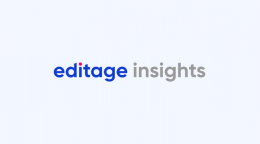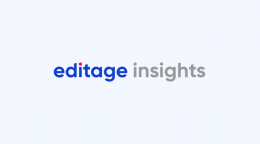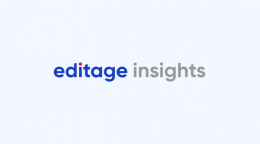Tips to identify whether a source is scholarly and reliable

It is important to find credible sources of information while researching for articles and other scholarly material to write an essay, a research paper, or any other academic task.
Usually, the resources are collated and compiled from a variety of sources such as newspapers, books, periodicals (journals and magazines) and websites. Some of these resources are considered popular sources whereas the others are considered scholarly sources.
When conducting literature search, do you feel uncertain about a source’s authenticity and credibility? In this article, we focus on identifying ‘scholarly’ sources for obtaining reliable information to be presented for academic work such as class assignments, dissertation, or thesis writing.
Tips for referring to popular sources
Newspapers and magazines are considered as ‘popular’ sources. They cater to a broad audience and have articles that are written by professional writers (for example, a journalist who might not be an expert in the field) in a more general way using common/popular language; these do not follow any specific format and rarely have references or endnotes.
Books and journals, on the other hand, are considered ‘scholarly’ publications which are intended for specialist readership of researchers, academics, students, and professionals. They publish in-depth articles and reviews on specific topics written by specialists and researchers in subject area who employ technical, subject-specific jargon. Apart from having a standard format, these publications are always accompanied by tables/figures and previously published articles as references.
Although popular sources are not without merit and may also contain well-considered writing, the purpose of distinguishing between these types of works is to determine their degree of authority and depth of research on a given topic, and thereby their intrinsic academic value. If the project at hand allows it, you could depend on reliable popular sources.
Tips for referring to scholarly sources
Scholarly sources are also referred to as academic, peer-reviewed, or refereed sources. These are the sources researchers rely on. So let us discuss the three categories to which such scholarly sources belong - journals, books, and online resources.
1. Journals
An article published in a journal will have the following characteristics:
Authors: Names of the authors with their academic credentials, institutional affiliation, address, and e-mail addresses are provided alongside every publication. Make sure that the author(s) and/or corresponding author(s) are experts in the field, are affiliated to an unbiased reputable organization or credible academic institution/university, have had previous publications in peer-reviewed journals or books for which references can be found.
Publishers: Publishers are usually academic publishing houses, universities, research organisations, professional bodies, or other recognised authorities producing research.
Basic information, such as the names of the editorial board members and the Editor-in-Chief, is mentioned on the journal’s website. You will also find information about the guidelines followed by the journal; for example, Committee On Publication Ethics (COPE) or International Committee of Medical Journal Editors (ICMJE). Examples of some well-known publishers include Springer, Elsevier, Taylor & Francis, Wiley-Blackwell Publishing, SAGE Publishing, Macmillan, American Association for the Advancement of Science, Nature Publishing, etc.
Here are certain things you must look at when ascertaining the credibility of a journal:
- Make sure that the contact details and ‘about’ information is provided. Sometimes, the journal might be associated with institutions or societies. Look them up on the internet to get more information. Look out for the type of peer review the journal offers, and if all the details about their policies, licenses, and copyright terms are mentioned.
- Ensure that the information on the journal website has been recently updated and the links provided are up to date and working. Always check whether the journal website is part of a commercial organisation, a political party, or an organisation with a specific agenda, which might result in the information on the website being biased.
- Author guidelines: The types of articles published by the journal and the guidelines to prepare the manuscript, artwork, and supplementary materials should be clearly indicated on the journal website.
- Journal metrics: Some journals offer information on their influence such as Eigenfactor, SCImago rankings, CiteScore, Source Normalized Impact per paper (SNIP), etc.
- Abstracting/Indexing: Always ensure that the journal in which the article is published is indexed and abstracted in reputed databases like Clarivate Analytics, MEDLINE/PubMed, Scopus, EBSCO, PsycINFO, IEEE Explore, SciELO, CiteSeer X, etc.
Content: The content of the article is targeted towards a specific audience in that subject area. The article generally follows a format or structure including abstract, keywords, introduction, methodology, results, discussion, conclusion, bibliography. The length of the article may vary depending up on the journal guidelines. Extensive reference to past research is a key feature of academic works. References are cited both in-text and recorded in footnotes or in a reference list at the end of the article; recent relevant references of the past 3-5 years is a good indicator of a scholarly article. Scholarly articles usually contain illustrations in the form of graphs, charts, and tables to depict the results of the research work.
The content should be non-biased and provide a very objective review or study on a particular topic stating both strengths and limitations of the study. Articles with numerous typographical mistakes, grammatical errors, or other inaccuracies are not reliable. Search for the citations of the article on library databases or on Google Scholar.
2. Books
Books have been a source of information from time immemorial. The following points should be borne in mind while scouring books for scholarly content:
Authors: Always check the credibility of the author by verifying the biography details. Ensure that the author is an expert in the field of study, confirm the author’s institutional affiliation, other publications of the author, and check if the publisher stands to benefit from the research or argument presented in the book.
Publisher: Books published by university presses, professional or trade associations, government offices, institutes, research centres, and reputable commercial publishers are usually trustworthy and have scholarly content. Searching for book reviews online, which can provide clues as to whether a source is scholarly and highlight the intended audience, can be useful. Visit the publisher’s website and find out more information about the publisher to ensure that it is not a vanity press.
Content: Checking for the following aspects can give a fair idea as to the authenticity and relevance of the book for scholarly information:
- Does the title of the book indicating its specificity of the topic?
- Multiple editions indicate the book is well-regarded enough to have been through revisions, and has been updated.
- Scrutinizing the preface and introduction of the book helps in assessing the author’s perspective and the presence of any biases in the book.
- Scanning the table of contents, abbreviations, and index is helpful to know what facets of the subject/topic the book covers.
- Browsing the publication dates of references and/or a bibliography can help in assessing the reliability and accuracy of the information given in the book.
3. Websites: Online search is the most popular and convenient way to find information. However, caution should be exercised while procuring information from any website. Here are some tips:
Authenticity: URLs or website addresses can reveal the following information:
- Government sites use .gov and .mil domains. Educational sites use the .edu domain. And non-profit organizations use .org whereas business sites use .com. Generally, .gov and .edu sites are considered more trustworthy than .org and .com sites.
- Browse the web page for a name, email address, or the "About Us" or Contact Us" page to determine who created the site. Using search engines will aid you in obtaining biographical information about the publisher of the website.
- Usually, symbols like ~ and %, or words like ‘staff’ and ‘students’ are often used to signify a personal website and are found on the site URL. They might show up in official areas, but might not be officially sponsored by that group since students and faculty are often granted their own private space on university or school websites. Information on such websites often consists of personal opinions and might not be fully reliable.
- Searching for the history, the funding, and the focus of the organization supporting the website helps in ascertaining the authenticity of the website.
Content: Surveying the content of the website can reveal a lot about the intent of the information presented:
- Check for the timeframe/timeline and geographical location that the topic addresses; check when was the website created and updated to ensure that the information presented is up-to-date.
- Browse the website for the types of links and citations that are present on the website. Read the contents of the website carefully to determine that the data and facts added value to the topic and are not prejudiced, manipulative, or distorted.
Conclusion
Describing and discussing correct and error-free information is a vital part of any academic writing. We hope that the pointers given in this article will aid you in finding valid sources of scholarly material. It is always a good idea to check with the librarian and library databases of the institution/university for authentic scholarly sources. While the verification process may take a bit of your time and effort, being sure of the authenticity of your sources will help you advance in your task with more confidence.
Related reading:
- Gathering useful resources for future publication
- Tips for effective literature searching and keeping up with new publications
Published on: Jul 31, 2018
Comments
You're looking to give wings to your academic career and publication journey. We like that!
Why don't we give you complete access! Create a free account and get unlimited access to all resources & a vibrant researcher community.

Subscribe to Conducting Research













